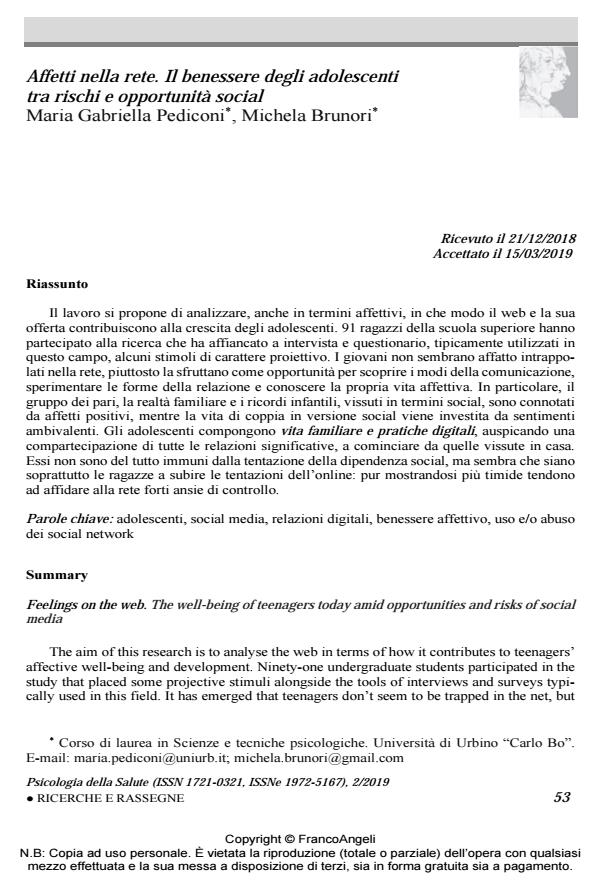Affetti nella rete. Il benessere degli adolescenti tra rischi e opportunità social
Titolo Rivista PSICOLOGIA DELLA SALUTE
Autori/Curatori Maria Gabriella Pediconi, Michela Brunori
Anno di pubblicazione 2019 Fascicolo 2019/2
Lingua Italiano Numero pagine 27 P. 53-79 Dimensione file 363 KB
DOI 10.3280/PDS2019-002003
Il DOI è il codice a barre della proprietà intellettuale: per saperne di più
clicca qui
Qui sotto puoi vedere in anteprima la prima pagina di questo articolo.
Se questo articolo ti interessa, lo puoi acquistare (e scaricare in formato pdf) seguendo le facili indicazioni per acquistare il download credit. Acquista Download Credits per scaricare questo Articolo in formato PDF

FrancoAngeli è membro della Publishers International Linking Association, Inc (PILA)associazione indipendente e non profit per facilitare (attraverso i servizi tecnologici implementati da CrossRef.org) l’accesso degli studiosi ai contenuti digitali nelle pubblicazioni professionali e scientifiche
Il lavoro si propone di analizzare, anche in termini affettivi, in che modo il web e la sua offerta contribuiscono alla crescita degli adolescenti. 91 ragazzi della scuola superiore hanno partecipato alla ricerca che ha affiancato a intervista e questionario, tipicamente utilizzati in questo campo, alcuni stimoli di carattere proiettivo. I giovani non sembrano affatto intrappolati nella rete, piuttosto la sfruttano come opportunità per scoprire i modi della comunicazione, sperimentare le forme della relazione e conoscere la propria vita affettiva. In particolare, il gruppo dei pari, la realtà familiare e i ricordi infantili, vissuti in termini social, sono connotati da affetti positivi, mentre la vita di coppia in versione social viene investita da sentimenti ambivalenti. Gli adolescenti compongono vita familiare e pratiche digitali, auspicando una compartecipazione di tutte le relazioni significative, a cominciare da quelle vissute in casa. Essi non sono del tutto immuni dalla tentazione della dipendenza social, ma sembra che siano soprattutto le ragazze a subire le tentazioni dell’online: pur mostrandosi più timide tendono ad affidare alla rete forti ansie di controllo.
Parole chiave:Adolescenti, social media, relazioni digitali, benessere affettivo, uso e/o abuso dei social network
Maria Gabriella Pediconi, Michela Brunori, Affetti nella rete. Il benessere degli adolescenti tra rischi e opportunità social in "PSICOLOGIA DELLA SALUTE" 2/2019, pp 53-79, DOI: 10.3280/PDS2019-002003